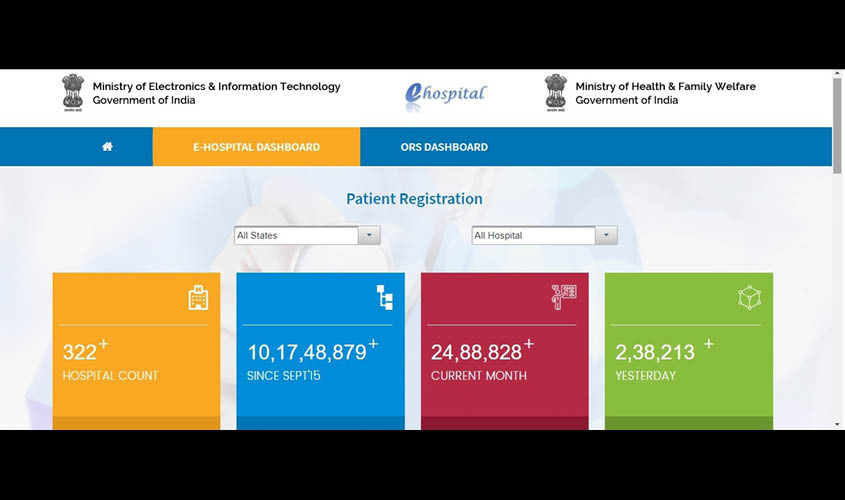As per National Health Profile 2018, India has 23,582 government hospitals.
New Delhi: The “E-hospital” service which was launched by Prime Minister Narendra Modi in July 2015, so that that patients visiting government hospitals across the country to seek treatment do not have to stand in queue to book an appointment, has so far seen only 322 hospitals coming on board (as on 12 June).
This Online Reservation System (ORS) for patients under the “E-hospital” initiative was touted as a project that was very close to Prime Minister Modi’s heart and was a part of the “Digital India” initiative.
Of these 322 hospitals, 29 are Central government hospitals, 245 state government hospitals and 48 autonomous hospitals.
As of 12 June 2019, more than 10.16 crore patients across the country had availed of this facility, which shows the need of such a system and the popularity for it among patients who can also use it to book appointments for laboratory tests.
The most number of patients using this initiative ever since it was launched have come from Uttar Pradesh (2.35 crore), Karnataka (2.18 crore), Delhi (2.06 crore) and Madhya Pradesh (1.69 crore).
This system is being jointly managed by the Ministry of Health and Family Welfare (MoHFW) and Ministry of Electronics and Information Technology (MEITY).
However, with only 322 hospitals coming on board in nearly four years, questions are being raised on why the MoHFW, which is the nodal authority to bring all such hospitals on board, has failed to add more hospitals which would have helped the patients.
As per the National Health Profile, 2018 released by the Central Bureau of Health Intelligence, a government body, there are 23,582 government hospitals in India.
This newspaper sent emails to all the individuals concerned, including Health Minister Dr Harsh Vardhan, MoS for Health Ashwini Choubey, and Health Secretary Preeti Sudan, on why the number of hospitals added to this e-platform was low. However, no response was received till the time of filing of the story.
The officials concerned at MEITY, too, did not share their response to The Sunday Guardian’s queries.
Sources said that this laxity on the part of the MoHFW in not aggressively pushing for more hospitals to join this platform was one of the main reasons behind this, as many of the government hospitals would not want to bring in such a system as it would then bring in more transparency and increase the workload on the hospital staff.
Out of the total 29 states, only 29 Central government hospitals from only 14 states have executed this initiative till now.
A senior doctor with the All India Institute of Medical Sciences (AIIMS) said: “Many patients do not want to go to government hospitals because of the time that is wasted on taking appointments. In many cases, a patient has to spend at least 5-6 hours just to book an appointment to see a doctor who will inspect him or her for less than two minutes. As a result, the patient has no choice but to go to a private hospital, where the queue is short, but the fees are high. One cannot rule out connivance between Health Ministry officials and private hospitals with the intention to damage this initiative by Prime Minister Modi so that more and more patients are forced to go to private hospitals. The PMO needs to intervene and find out the reason as to why Health Ministry officials are not pushing for this noble initiative.”
The primary objective behind launching this service, as outlined by the government, was to let patients avail of OPD appointment services easily without standing in queue, to integrate payment gateway for online payments and to facilitate patients in viewing their laboratory reports and check blood availability status in hospitals.
As per a press release issued by the Press Information Bureau in October 2016, in the 16 months of implementation since the launch of this initiative in July 2015, the AIIMS Delhi, where it was first launched, saw the largest footprint and reduced the waiting times at the hospital by nearly six hours, brought transparency to OPD appointments and created digital medical records

